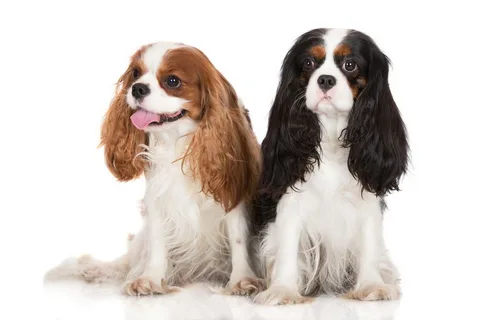They are a breed that is classy and friendly at the same time. The craft has been related to England’s aristocratic courts, specifically the ones of King Charles I and the II. This breed’s lineage reflects a legacy of royal endorsement, making it a symbol of nobility. The Cavalier King Charles Spaniel is cherished worldwide for its charming appearance, gentle demeanour and ability to form deep bonds with families, enriching lives with joy and loyalty.
1. Historical Origins and Royal Endorsements
These breeds hail from Great Britain, and more specifically, some varieties hail from as far back as the Renaissance period. At that period, it was impossible to imagine any nobleman’s house without such dogs, depicting small spaniels in paintings and tapestries. These small dogs are named so because they originated in England during the reign of King Charles II. This king was never without these Spaniels at his side.
They were known as the ‘Spaniels of King Charles’ The king was very fond of his Spaniels, and it is said that he made a law that these dogs could go anywhere in England, including the Houses of Parliament. The popular Spaniels of the 16th and 17th centuries had the characteristics of a snub nose and rounded heads, which were slowly eliminated through cross-breeding.
During Victorian times, the breed was crossed with the Asian toy breed Pug and the Japanese Chin, which changed the breed’s flat face to the famous Victorian look.
2. The Revival of the Breed
In the early 20th century, American Roswell Eldridge sought to revive the original appearance of the King Charles Spaniels after being inspired by their depictions in historical paintings. At the Crufts Dog Show in London, he offered substantial cash prizes for five years to those who could produce “Blenheim Spaniels of the old type”, as seen in the paintings of King Charles II’s time.
This caused a resurgence of breeding the initial form of King Charles Spaniel, which bred today’s Cavalier King Charles Spaniel separate from the flat-faced King Charles Spaniel (English Toy Spaniel in America).
3. Distinctive Features and Temperament
The essential features of the Cavalier King Charles Spaniel include large, soft, and appealing eyes and an intelligent and affectionate look. They have a silky, medium-length coat in four recognised colour patterns: a car that has or is associated with characteristics such as Blenheim, tricolour, ruby, and black and tan. They are appropriate as lap dogs and playmates because of their gentle, elegant, but muscular structure.
In terms of temperament, the Cavalier is quite suitable as a companion dog in a household as it is easygoing, loyal, friendly, and affectionate. They are needy, love being around human beings, and exhibit a behaviour often called ‘tail-wagging’ happiness. They are ideal family dogs for people with kids and other pets.
In addition, they are intelligent and love to work, which makes it reasonably easy to train them, but they should only be handled gently.
4. Health Considerations
However, despite all the good characteristics, the Cavaliers still need their genetic-specific health problems. Of the four, the most common is mitral valve disease (MVD), a heart ailment that usually starts to show in later years and causes death to the breed. Syringomyelia or SM, a disease of the brain and spinal cord that results in much pain and discomfort, is also present.
Potential owners seeking to own an available Cavalier King Charles Spaniel for sale should ensure their breeder tests the dog genetically to eliminate or reduce the risks of these diseases in breeding stock.
5. Care and Maintenance
The breed necessitates frequent grooming to keep used for a shiny and tangle-free coat, especially at the edges of the ears and feet. They also require their ears to be checked and cleaned often since they are prone to ear infections. Cavaliers are also very fond of their meals, which makes it very important that their feeding patterns and weight are constantly checked to avoid obesity since they are so inclined to it.
6. Cultural Impact and Modern-Day Popularity
Dogs have long been celebrated in art, literature, and film, often symbolising class, wealth, and nobility. Their cultural significance persists, as they remain beloved by the public, bolstered by their portrayal in various media. In modern society, dogs, particular breeds, are trendy, attracting enthusiasts with their friendly nature and adaptability.
This enduring fascination is evident in films, books, and artworks that depict dogs as majestic companions, reinforcing their status as icons of grace and strength in modern culture. Their universal appeal continues to resonate across diverse audiences.
Final Thoughts
The Cavalier King Charles Spaniel embodies a captivating fusion of history and affection, symbolising comfort and joy for their owners. With roots tracing back to the royal courts of England, these dogs have seamlessly adapted to various family environments, making them a cherished choice for dog lovers worldwide. Their charming demeanour and gentle nature enhance their appeal, allowing them to thrive as companions and lapdogs.
As they carry forward a legacy of companionship and elegance, the Cavalier King Charles Spaniel is a testament to the enduring bond between humans and canines, celebrated for their loyalty and affectionate temperament.


